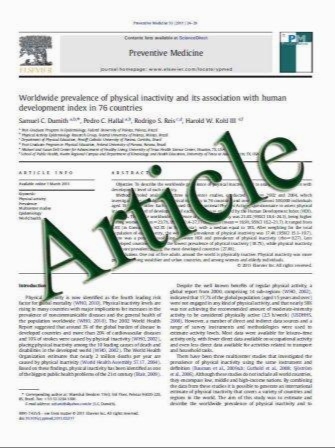Measurement of melatonin in body fluids: Standards, protocols and procedures
- نوع فایل : کتاب
- زبان : انگلیسی
- مؤلف : Eduardo Alves de Almeida & Paolo Di Mascio & Tatsuo Harumi & D. Warren Spence & Adam Moscovitch & Rüdiger Hardeland & Daniel P. Cardinali & Gregory M.
- چاپ و سال / کشور: 2010
Description
Background and Purpose The circadian rhythm of melatonin in saliva or plasma, or of the melatonin metabolite 6- sulfatoxymelatonin (a6MTs) in urine, is a defining feature of suprachiasmatic nucleus (SCN) function, the body’s endogenous oscillatory pacemaker. The primary objective of this review is to ascertain the clinical benefits and limitations of current methodologies employed for detection and quantification of melatonin in biological fluids and tissues. Data Identification A search of the English-language literature (Medline) and a systematic review of published articles were carried out. Study Selection Articles that specified both the methodology for quantifying melatonin and indicated the clinical purpose were chosen for inclusion in the review. Data Extraction The authors critically evaluated the methodological issues associated with various tools and techniques (e.g. standards, protocols, and procedures). Results of Data Synthesis Melatonin measurements are useful for evaluating problems related to the onset or offset of sleep and for assessing phase delays or advances of rhythms in entrained individuals. They have also become an important tool for psychiatric diagnosis, their use being recommended for phase typing in patients suffering fromsleep and mood disorders. Additionally, there has been a continuous interest in the use of melatonin as a marker for neoplasms of the pineal region. Melatonin decreases such as found with aging are or post pinealectomy can cause alterations in the sleep/wake cycle. The development of sensitive and selective methods for the precise detection of melatonin in tissues and fluids has increasingly been shown to have direct relevance for clinical decision making. Conclusions Due to melatonin’s low concentration, as well as the coexistence of numerous other compounds in the blood, the routine determination of melatonin has been an analytical challenge. The available evidence indicates however that these challenges can be overcome and consequently that evaluation of melatonin's presence and activity can be an accessible and useful tool for clinical diagnosis.
DOI 10.1007/s00381-010-1278-8 Childs Nerv Syst (2011) 27:879–891 Received: 3 August 2010 / Accepted: 7 September 2010 / Published online: 21 November 2010


